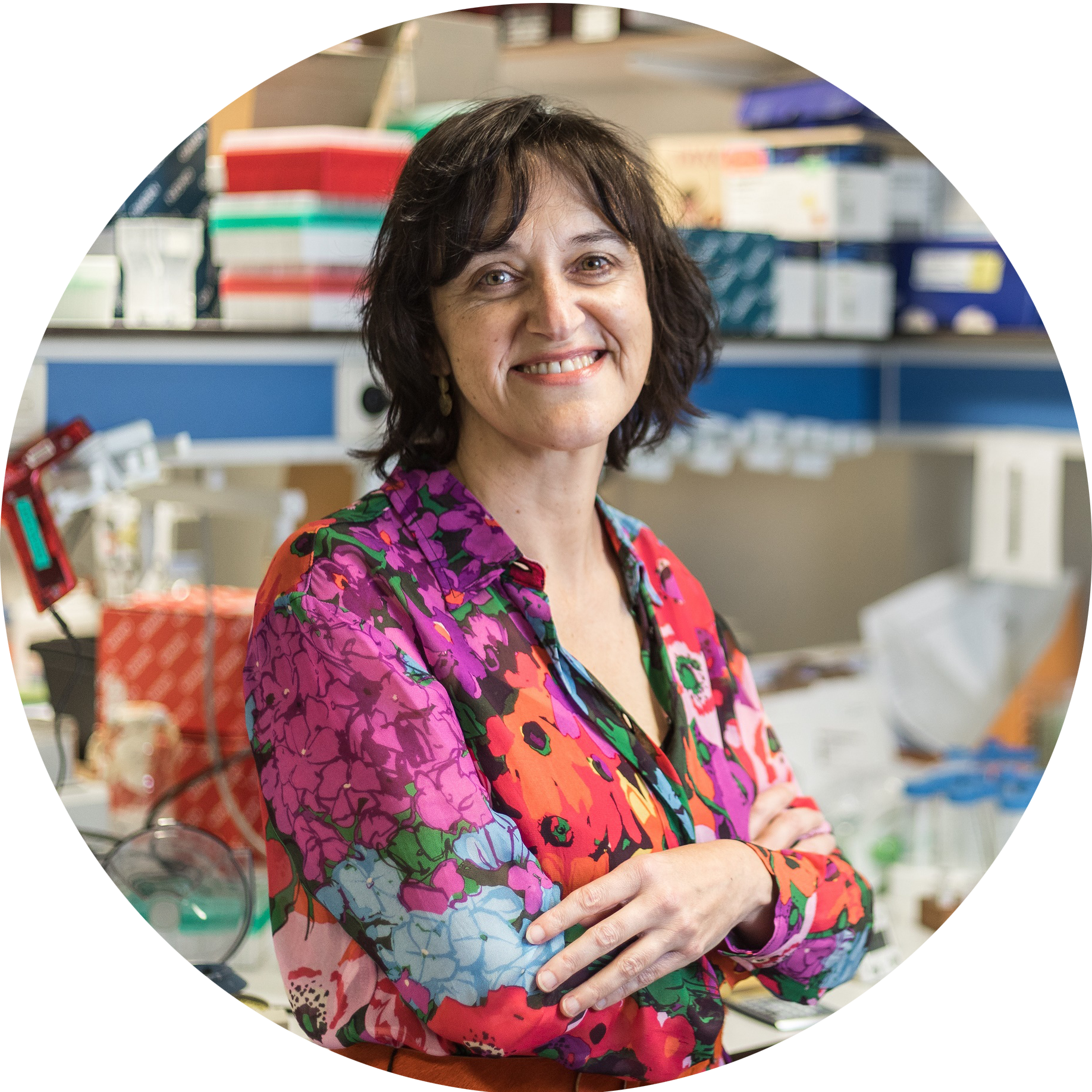Inside the Lab- with Hilde Van Esch
 By Dr. Dominique Pichard, Chief Science Officer, International Rett Syndrome Foundation
By Dr. Dominique Pichard, Chief Science Officer, International Rett Syndrome Foundation
Accelerating Rett research is our mission at IRSF, and our investment in Dr. Van Esch’s ground-breaking work reflects that mission in every way. Dr. Van Esch sees patients with Rett syndrome and has a track record of making breakthroughs in Rett-related research. We are proud to feature her and her potentially transformative new research direction in this edition of Inside the Lab.
Dr. Hilde Van Esch runs an outreach clinic for patients with Rett syndrome one day and conducts Rett science the next. She knows Rett and is well aware of the need for treatments. Further, as a mom, Van Esch empathizes with Rett families and the challenges they face. She’s driven to ensure her work makes a difference for them.
“I’m also a parent, so I feel very much how difficult their lives are,” says Van Esch, “If I can make a difference…I find this extremely rewarding.”
Her dedication to helping families has inspired her to take her already state-of-the-art research on Rett syndrome and Rett-related disorders to the next level. Her lab has been studying human-derived brain cells in Petri dishes. Now, Van Esch will investigate these same brain cells in mice.
This approach may seem unusual. Indeed, few researchers use it because it is very specialized. And Van Esch is the only one in the world employing it in a study of Rett syndrome. However, her novel work may bridge a gap between humans with Rett syndrome and the mice used in Rett research.
Accelerating Rett research with a humanized mouse model
 Animal models play essential roles in disease research and treatment development. Mouse models, for instance, have enabled substantial progress in our ability to combat a wide variety of diseases. Yet, humans aren’t mice, and scientists’ ability to translate findings made using mouse models to humans is not guaranteed. For example, a treatment that proves effective in mice may or may not possess the same efficacy in human patients.
Animal models play essential roles in disease research and treatment development. Mouse models, for instance, have enabled substantial progress in our ability to combat a wide variety of diseases. Yet, humans aren’t mice, and scientists’ ability to translate findings made using mouse models to humans is not guaranteed. For example, a treatment that proves effective in mice may or may not possess the same efficacy in human patients.
Rett syndrome is no exception in this regard. The most commonly studied mouse model of Rett syndrome (developed by Sir Adrian Bird) shows many of the same symptoms as human individuals. However, the brain cells in these mice display all the characteristics of Rett from birth. As such, researchers currently lack the means to study the period of normal development and the regression of skills- key features of Rett syndrome- in an animal model.
Van Esch’s IRSF-funded work could establish the necessary means. With the assistance of her collaborator Dr. Pierre Vanderhaegehn, Van Esch will study brain development in mice receiving a transplant of human-derived healthy, Rett, or MECP2 Duplication Syndrome brain cells as embryos.
“What we want to see is if we can [recreate regression] in the mouse brain, and see if these [Rett and Rett-related brain cells] start to suffer,” Van Esch states.
The successful recording of regression in a mouse would represent a major milestone in Rett syndrome research. Excitingly, it would also pave the way for other discoveries that could speed the treatment development process. For instance, by observing what happens during regression, researchers may identify new therapeutic targets.
“What is the trigger?” Van Esch asks as an example of one of the many unanswered questions researchers have about regression, “We hope that [our approach] will visualize this.”
The model may also offer advantages for testing new Rett syndrome treatments. For one, it would provide the first available means to assess a treatment’s effect on regression. Additionally, its use of human brain cells might make it a better predictor of the human response to treatments for Rett in the same way that mice carrying human tumors have improved predictions of human cancer treatment efficacy.
A history of breakthroughs and a future of hope
Of course, no one can predict the future outcomes of Van Esch’s work. However, Van Esch’s past performance indicates that we have every reason to hope for the best.
Van Esch’s career highlights already include significant contributions to Rett and Rett-related disorders. She discovered the Rett-related disorder MECP2 duplication syndrome in 2005. She serves on the board for the European Reference Network ITHACA, an outreach organization dedicated to serving patients with rare diseases like Rett syndrome. As stated above, she also leads a multidisciplinary clinic for children and adults with Rett syndrome.
No matter what, Van Esch anticipates remaining highly motivated to do science that could impact patients’ lives. She expresses optimism about researchers’ potential to find treatments and ultimately a cure for Rett syndrome. She keeps her hopes high and encourages families to do the same.
“Many people, many researchers (I’m just a small one!) are putting a lot of effort into finding a cure for these lovely children,” says Van Esch, “I hope that no one stops believing and hoping. That’s important.”